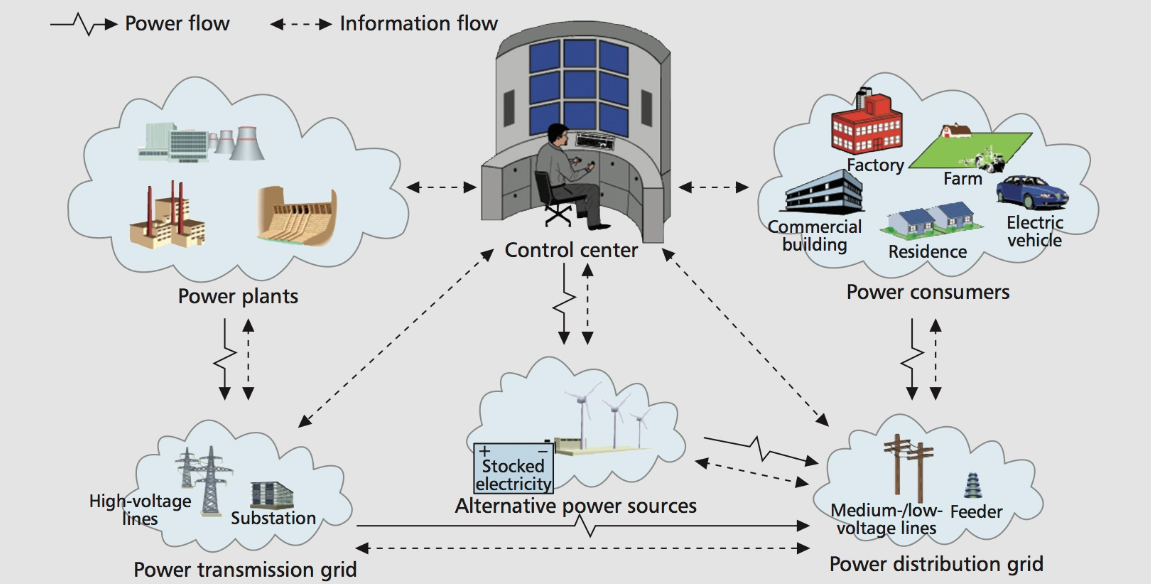CYBER SECURITY FOR UTILITIES
” PHYSICAL & CYBER SECURITY IS CRITICAL TO THE SUCCESS OF THE SMART GRID “
PT Reach International is currently has also started to explore the cyber security solutions and we are studying the cyber security risk that has been identified in United States especially in Smarts Grid and Smart Meter. For us, both Physical Security & Cyber Security play a critical factors to the success of Smart Grid and Smart Meter implementation. The failure of any part of the security will have potentially jeopardise the reputation and affect the revenue of the utility company.
Since many utility companies in the World will slowly embark in Smart Grid & Smart Meter installation, the cyber security is one of the main concern to the utility companies and to address this , we have started to study and involve our R&D Team to identify the security issues on this area and to formulate the Cyber Security Defense Strategy accordingly. We work together with our partner company in United States , PT Reach International Corporation to benchmark and learn from the experience in cyber sceurity breach of Smart Meter & Smart Grid in United States.
We categorised the Cyber Attack mainly into 3 main areas :
Attack on Network | Attack on Physical Hardware | Attack on Data.
All these areas need to be secured and it will need both Physical and Cyber security defense strategy to be in place to ensure the highest level of security measurements.

What is being done in the U.S. to protect the power grid from cyberattacks?
In U.S., a lot is being done to protect the power grid from cyberattacks. The power grid, or electric transmission system, is required to meet the North American Electric Reliability Corporation’s Critical Infrastructure Protection (NERC CIP) Standards. These standards include mandatory requirements for specific actions to protect the power grid from both physical and cyberattacks. CIP Standards are updated regularly to address emerging threats and are vigorously enforced by independent auditors backed by Federal Energy Regulatory Commission [FERC] fines for noncompliance.
The result of these regulations and their enforcement is reduced risk of attacks that create widespread power outages. Even with these evolving standards, cybersecurity is like a race that never ends. Attackers are learning and building their capabilities, too. Many nation states and rogue organizations are developing their cyberattack capabilities. We’ve seen attacks against power grid control systems create widespread outages twice in Ukraine. Recently, the U.S. Department of Homeland Security reported attempts to insert malware in our electric power control systems.
The U.S. recognizes the risk that other nations may develop cyberattacks the industry is unable to stop. One initiative DARPA launched several years ago is called Rapid Attack Detection, Isolation, and Characterization Systems [RADICS], research to develop technology that cybersecurity personnel, power engineers, and first responders can utilize to accelerate restoration of cyber-impacted electrical systems.
Overall, the U.S. industry is improving defenses and the U.S. government is conducting research to add new restoration capabilities.
What are the risks if attempts to disrupt the power grid are successful?
Clearly, power grid outages are disruptive. Not only do we lose the lights, after a few days, we may lose water treatment capabilities and also find it difficult to find an open gas station to refuel our cars and trucks. If a nation can do this, it can make coercive threats against other nations without actually going to war.
How can the U.S. better protect against such attacks?
With attackers learning and developing, defenses for all types of critical infrastructure control systems—including water, gas, and transportation—must improve just to keep pace.
On a personal level, we would all do well to learn to protect ourselves from cybertheft with malware like ransomware. Most of these attacks start with phishing to get us to install their malware and then exploiting an existing software vulnerability. The top few things we should all do to better protect ourselves include hovering over links and checking to see where these links are sending our internet browser before we click; having a questioning attitude about any and all information requests (never give away your ID and password); and quickly installing software patches and updates to apps to eliminate known vulnerabilities.
